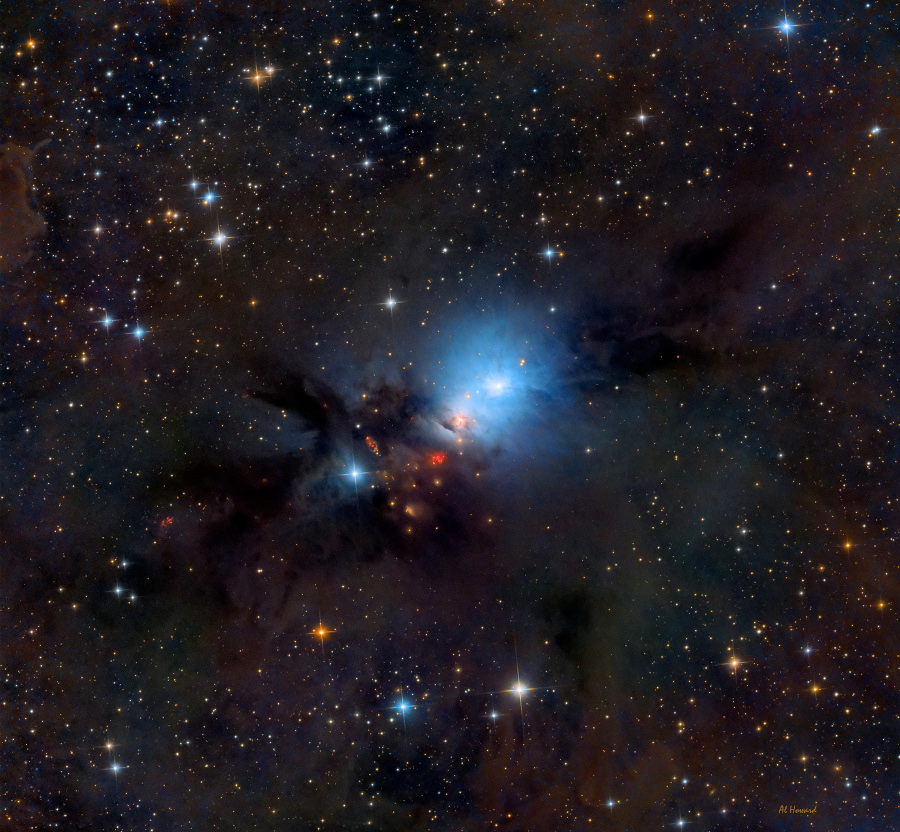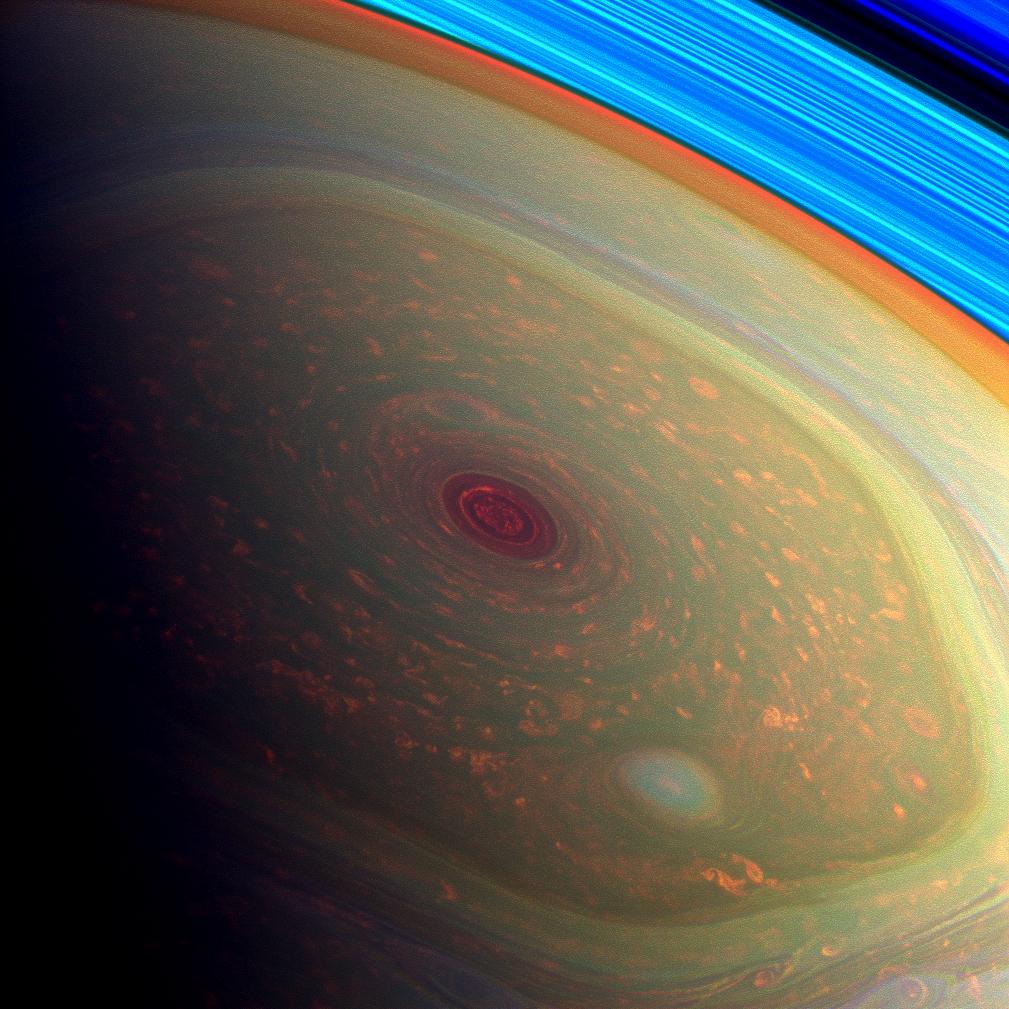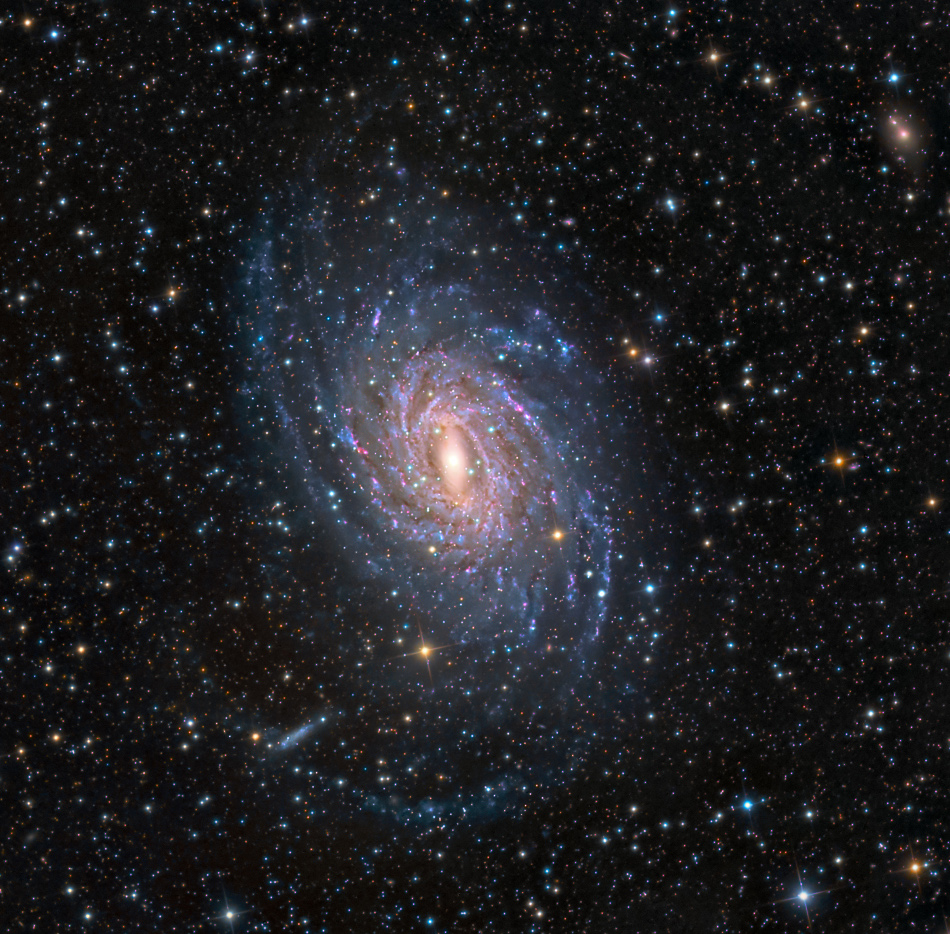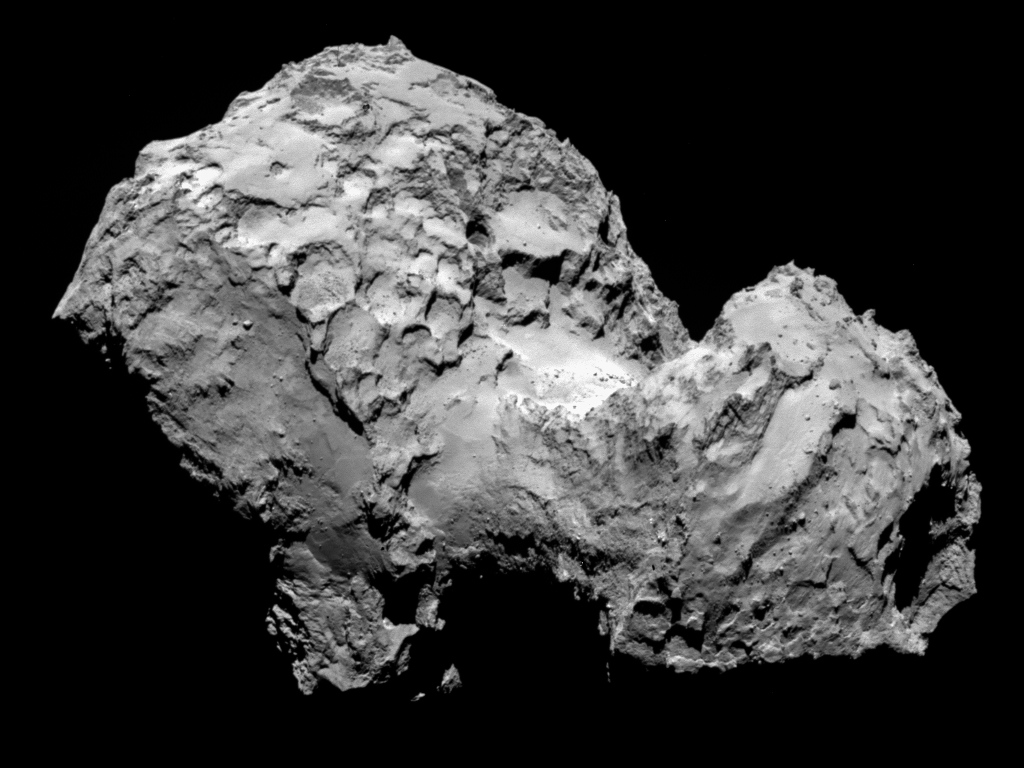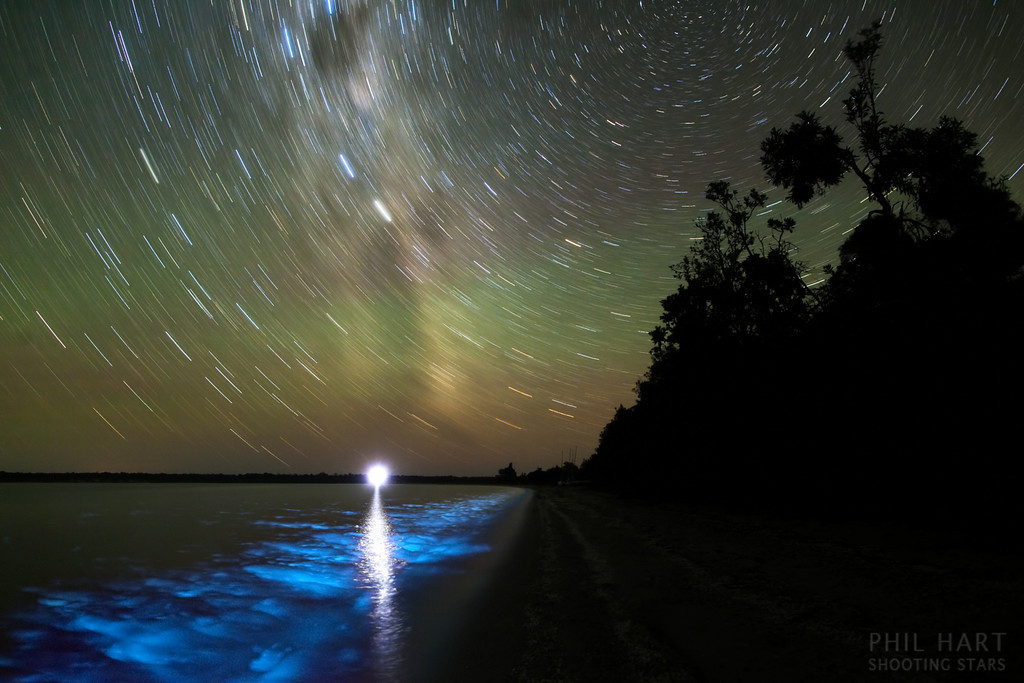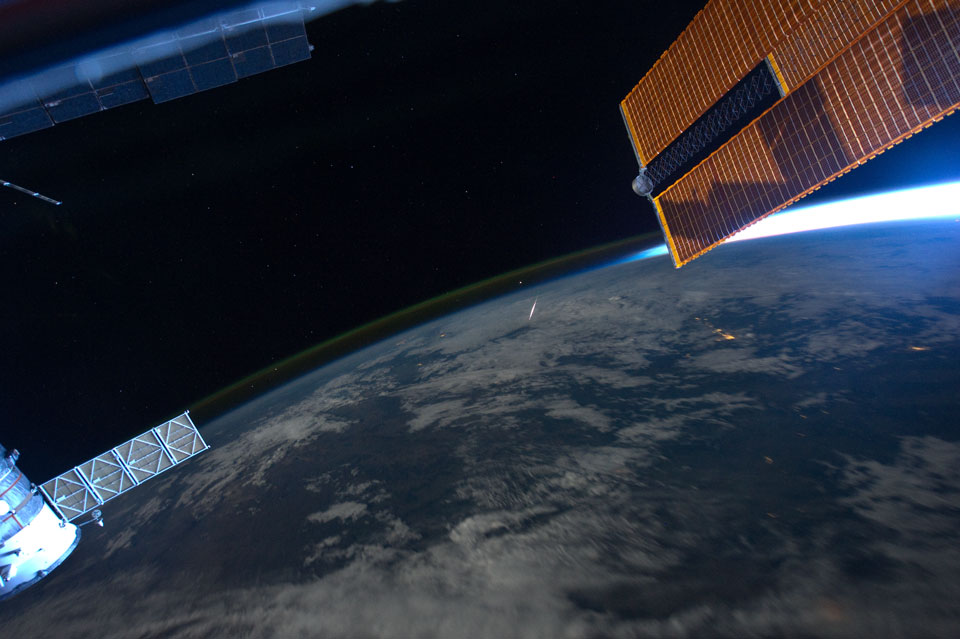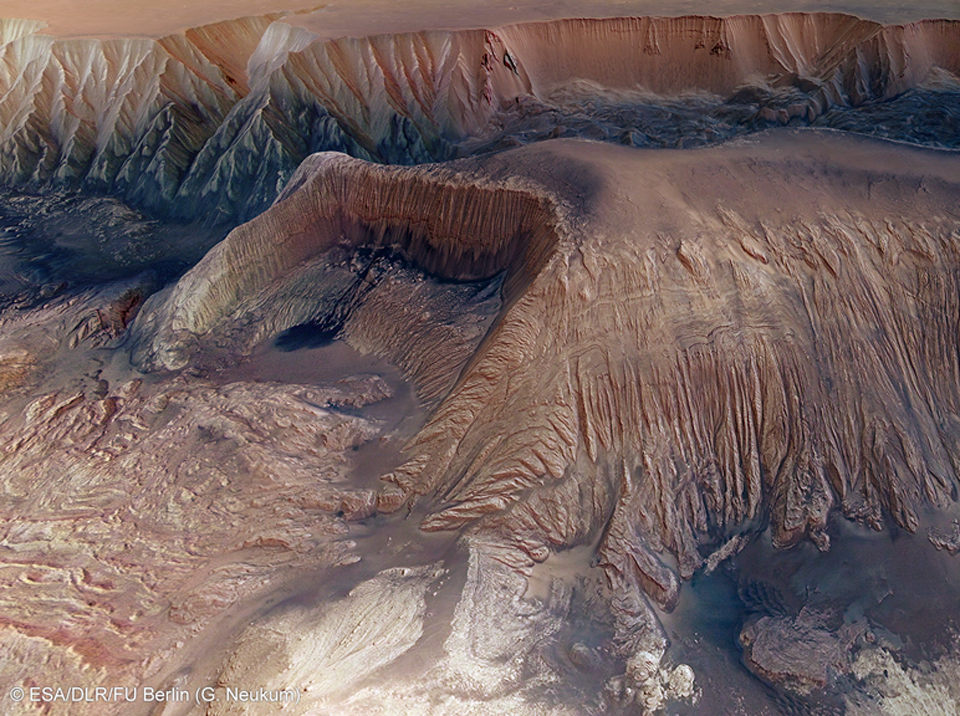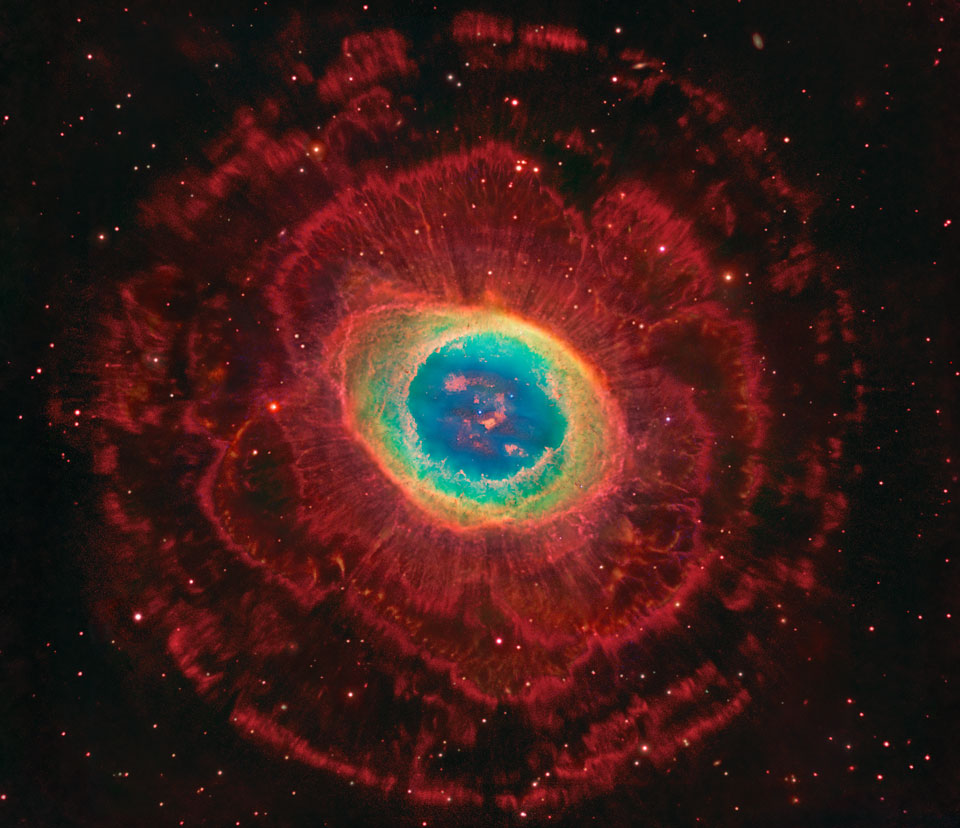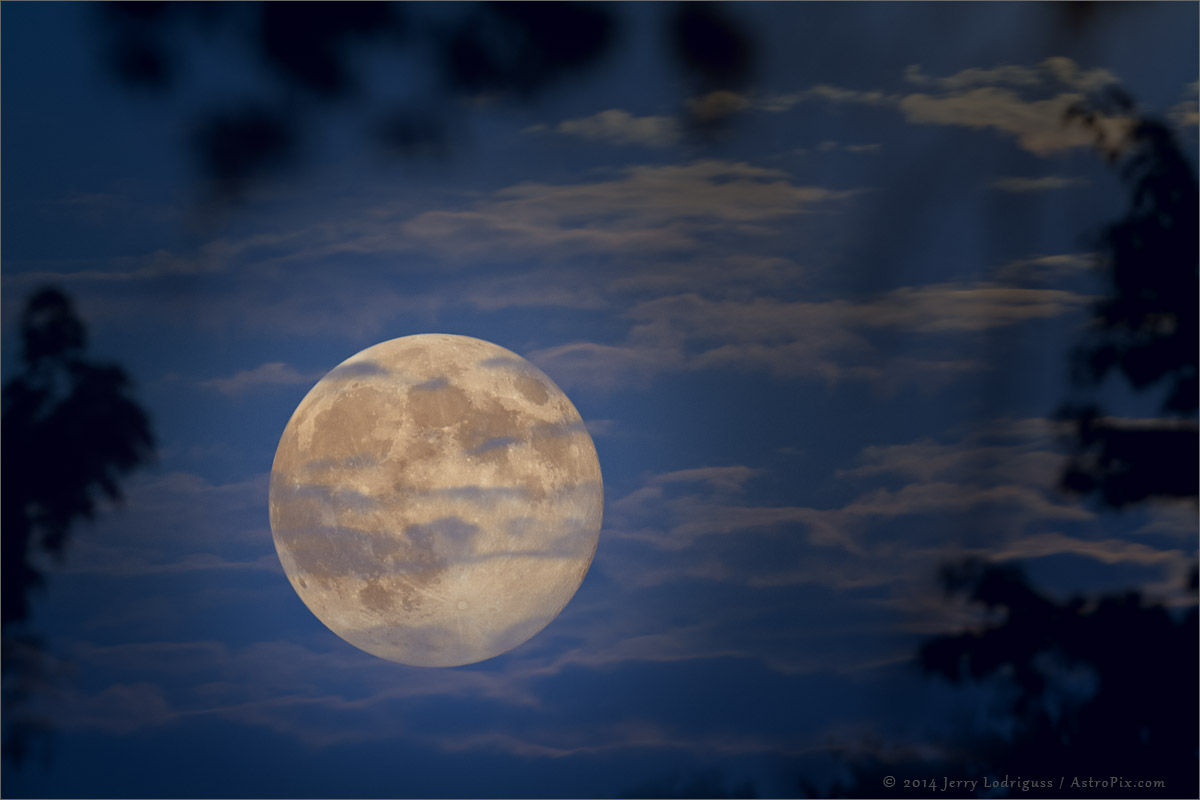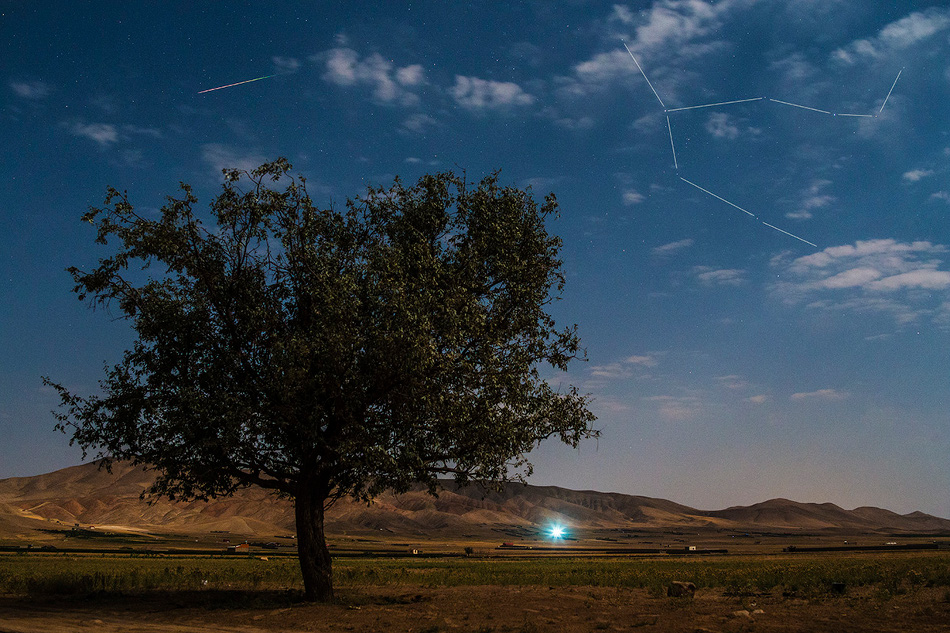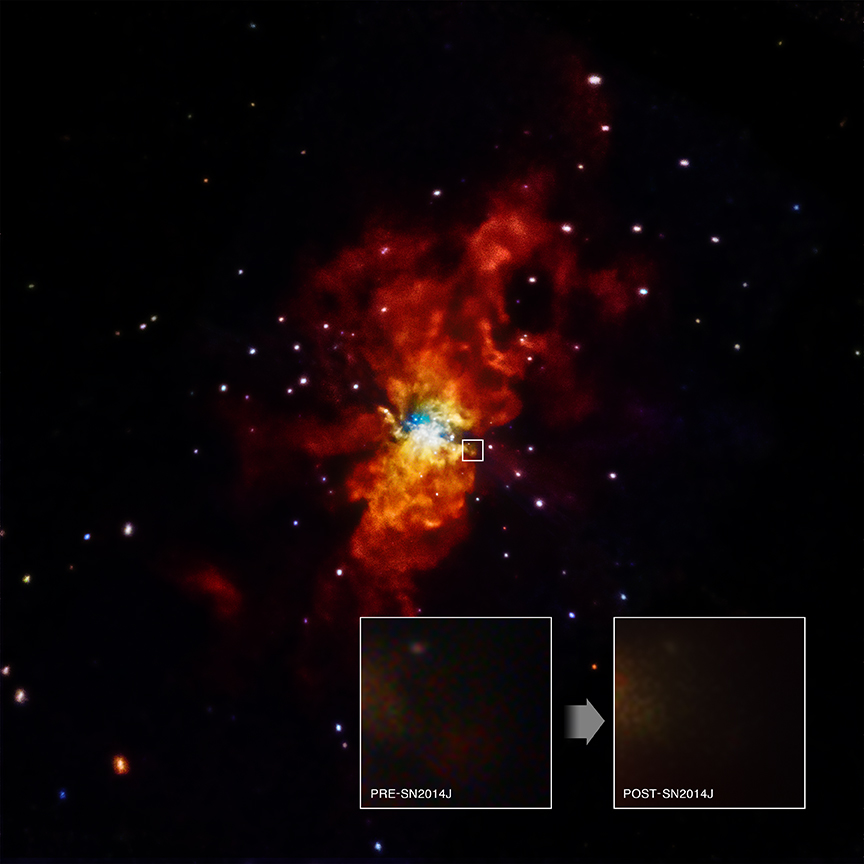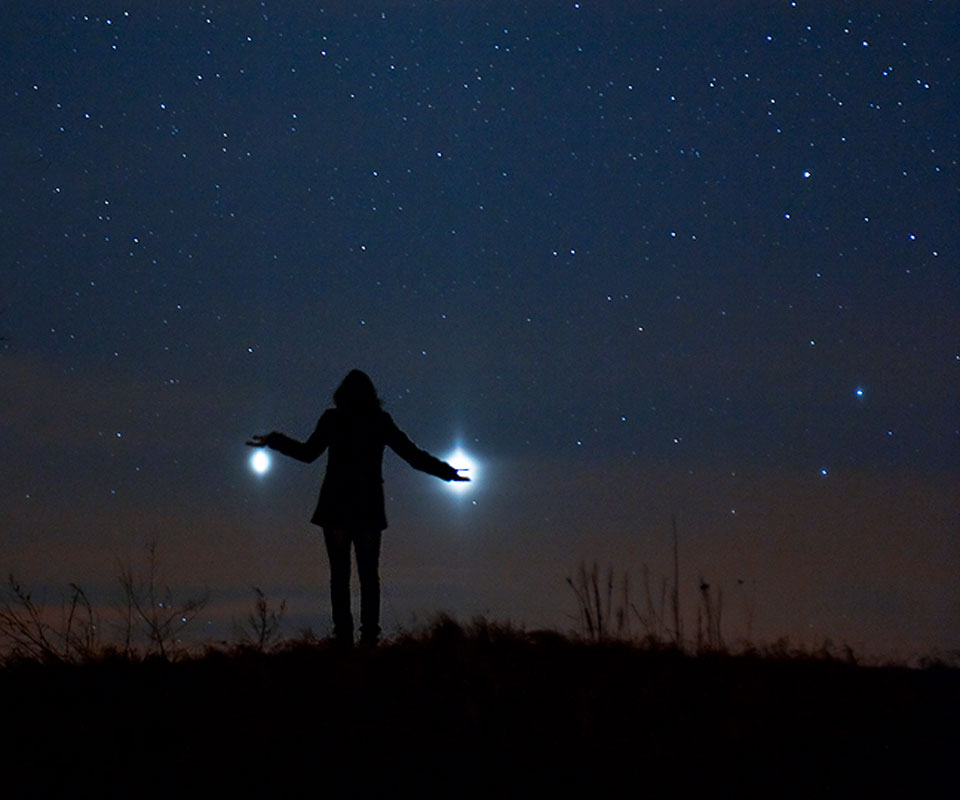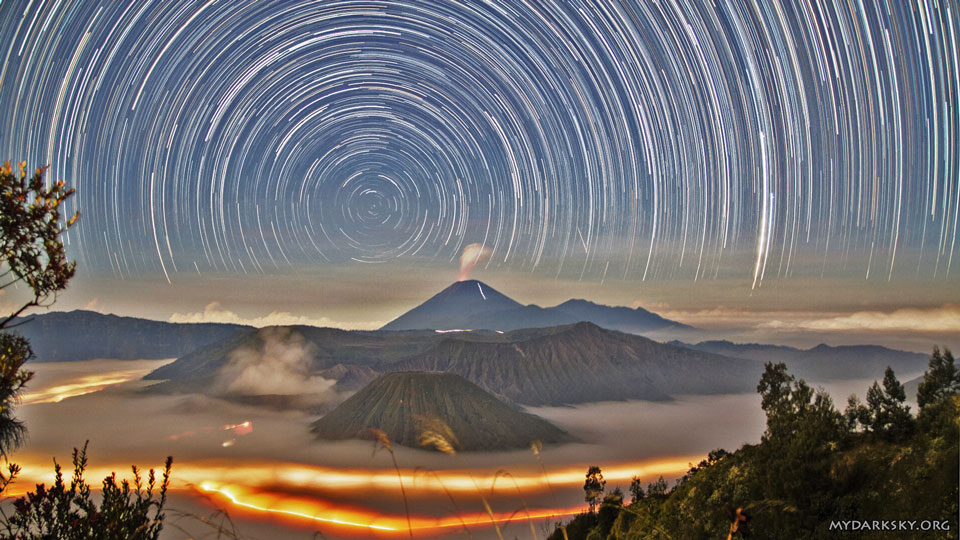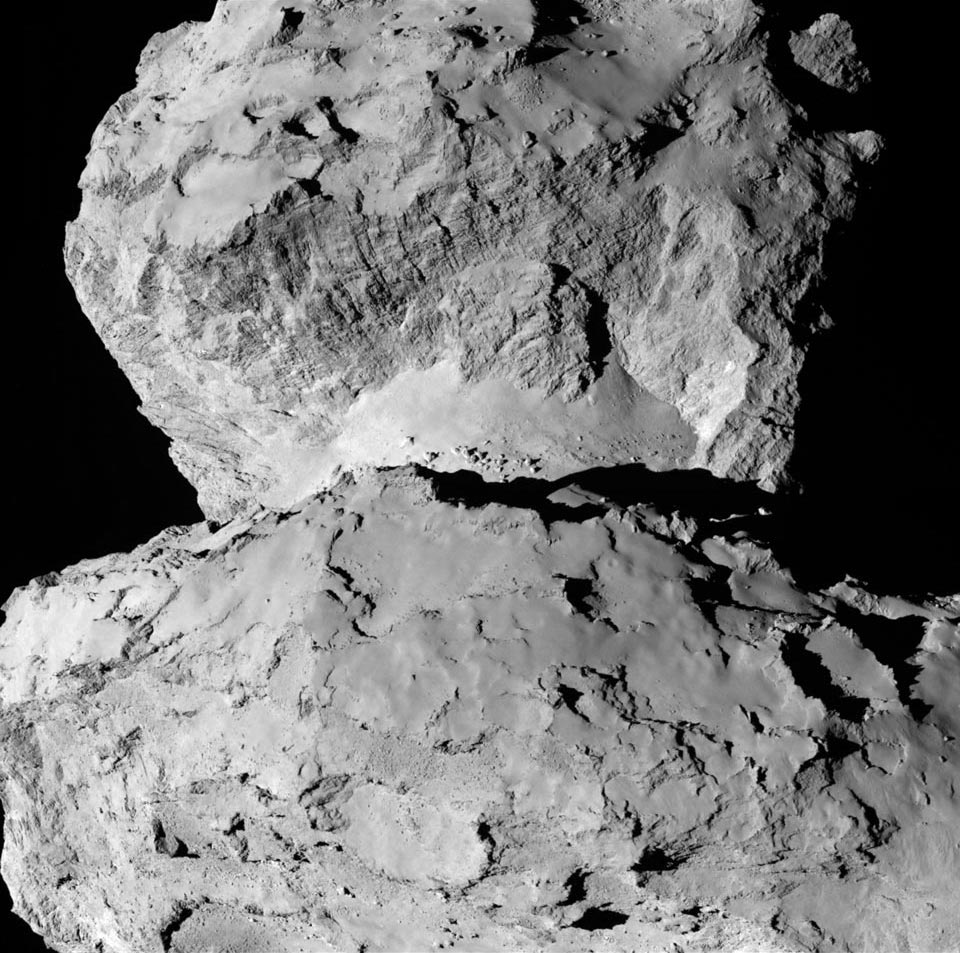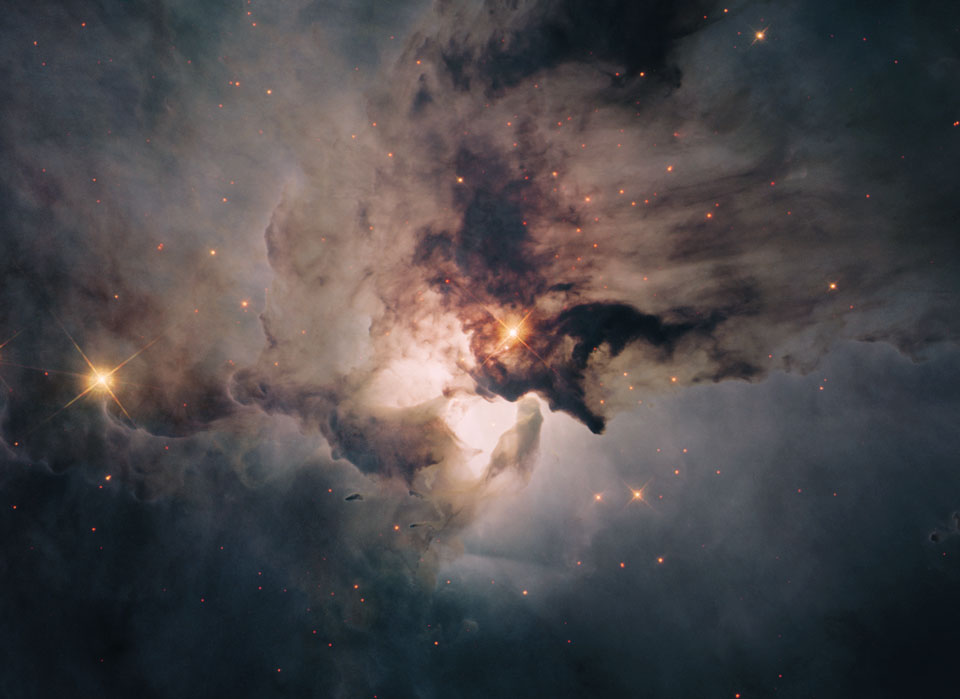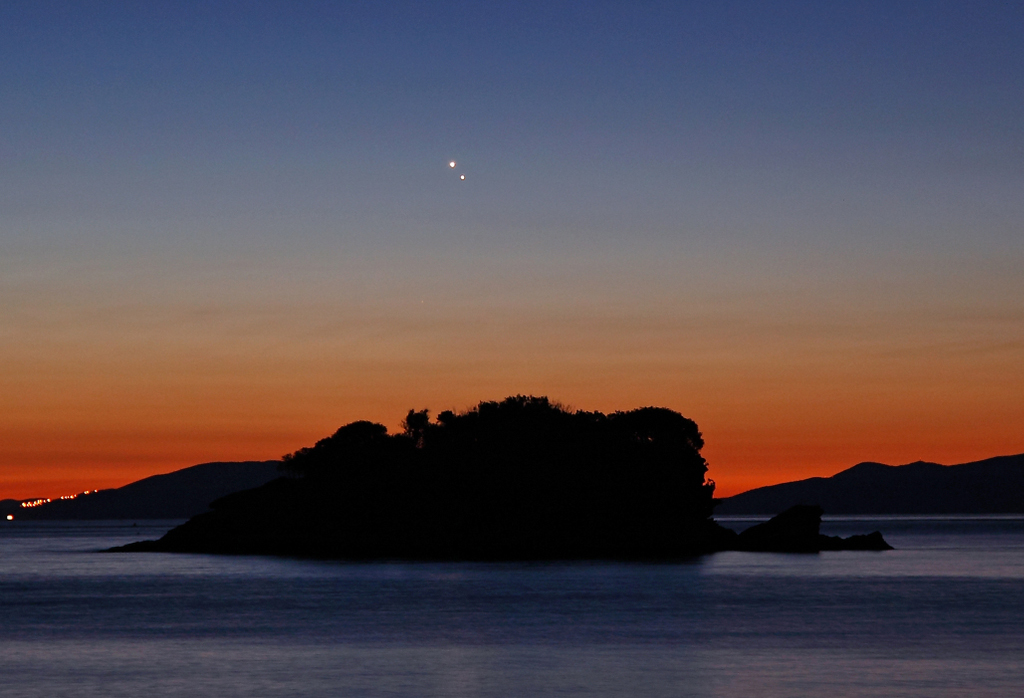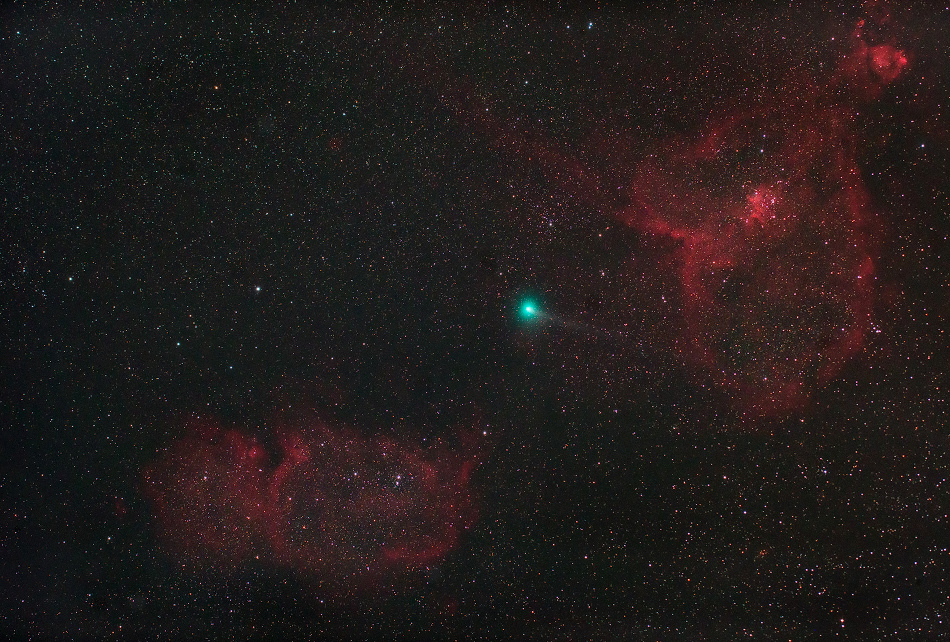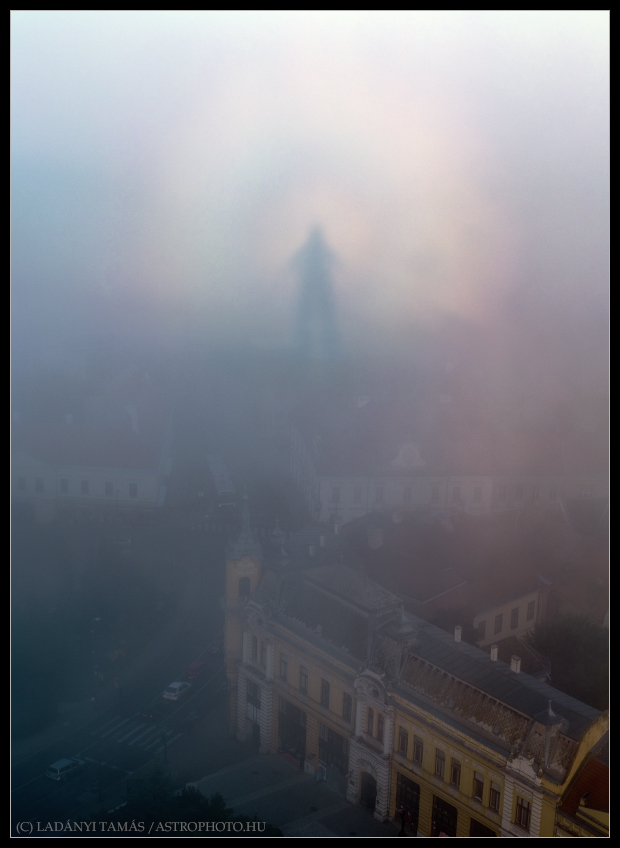
|
| Title: Astronomy Picture of the Day | |
| friendsoffortiesfive > General > General Discussion | Go to subcategory: |
| Author | Content |
|
Niceguy2
|
|
|
Date Posted:03/06/2014 11:29 PMCopy HTML I really love this site and |
|
|
tamarafromTX
|
#226 |
|
Re:Astronomy Picture of the Day Date Posted:08/06/2014 3:53 AMCopy HTML  |
|
|
Niceguy2
|
#227 |
|
Re:Astronomy Picture of the Day Date Posted:08/06/2014 9:59 PMCopy HTML Image Credit: Cassini Imaging Team, SSI, JPL, ESA, NASA Explanation: Acquiring its first sunlit views of far northern Saturn in late 2012, the Cassini spacecraft's wide-angle camera recorded this stunning, false-color image of the ringed planet's north pole. The composite of near-infrared image data results in red hues for low clouds and green for high ones, giving the Saturnian cloudscape a vivid appearance. Enormous by terrestrial standards, Saturn's north polarhurricane-like storm is deep, red, and about 2,000 kilometers wide. Clouds at its outer edge travel at over 500 kilometers per hour. Other atmospheric vortices also swirl inside the large, yellowish green, six-sided jet stream known as the hexagon. Beyond the cloud tops at the upper right, arcs of the planet's eye-catching rings appear bright blue. |
|
|
Niceguy2
|
#228 |
|
Re:Astronomy Picture of the Day Date Posted:08/08/2014 4:41 AMCopy HTML Image Credit & Copyright: Don Goldman Explanation: Big, beautiful spiral galaxy NGC 6744 is nearly 175,000 light-years across, larger than our own Milky Way. It lies some 30 million light-years distant in the southern constellation Pavo. We see the disk of the nearby island universe tilted towards our line of sight. Orientation and composition give a strong sense of depth to this colorful galaxy portrait that covers an area about the angular size of the full moon. This giant galaxy's yellowish core is dominated by the light from old, cool stars. Beyond the core, spiral arms filled with young blue star clusters and pinkish star forming regions sweep past a smaller satellite galaxy at the lower left, reminiscent of the Milky Way's satellite galaxy the Large Magellanic Cloud. |
|
|
Niceguy2
|
#229 |
|
Re:Astronomy Picture of the Day Date Posted:08/09/2014 12:04 AMCopy HTML Image Credit: ESA / Rosetta / MPS for OSIRIS Team; MPS/UPD/LAM/IAA/SSO/INTA/UPM/DASP/IDA Explanation: On August 3rd, the Rosetta spacecraft's narrow angle camera captured this stunning image of the nucleus of Comet 67P/Churyumov-Gerasimenko. After 10 years and 6.5 billion kilometers of travel along gravity assist trajectories looping through interplanetary space, Rosetta had approached to within 285 kilometers of its target. The curious double-lobed shape of the nucleus is revealed in amazing detail at an image resolution of 5.3 meters per pixel. About 4 kilometers across, the comet nucleus is presently just over 400 million kilometers from Earth, between the orbits of Jupiter and Mars. Now the first spacecraft to achieve a delicate orbit around a comet, Rosetta will swing to within 50 kilometers and closer in the coming weeks, identifiying candidate sites for landing its probe Philae later this year. |
|
|
Niceguy2
|
#230 |
|
Re:Astronomy Picture of the Day Date Posted:08/09/2014 10:58 PMCopy HTML 2014 August 9
Image Credit & Copyright: Phil Hart Explanation: What shines in the world at night? Just visible to the eye, a rare electric blue glow spread along the shores of Victoria Lake on January 16, 2013. Against reflections of a light near the horizon, this digitally stacked long exposure recorded the bioluminescence of noctiluca scintillans, plankton stimulated by the lapping waves. Above, the night skies of the Gippsland Lakes region, Victoria, Australia shine with a fainter greenish airglow. Oxygen atoms in the upper atmosphere, initially excited by ultraviolet sunlight, produce the more widely seen fading atmospheric chemiluminescence. Washed out by the Earth's rotation, the faint band of the southern summer Milky Way stretches from the horizon as star trails circle the South Celestial Pole. |
|
|
Niceguy2
|
#231 |
|
Re:Astronomy Picture of the Day Date Posted:08/10/2014 7:05 PMCopy HTML Image Credit: Ron Garan, ISS Expedition 28 Crew, NASA Explanation: Denizens of planet Earth typically watch meteor showers by looking up. But this remarkable view, captured on August 13, 2011 by astronaut Ron Garan, caught a Perseid meteor by looking down. From Garan's perspective onboard the International Space Station orbiting at an altitude of about 380 kilometers, the Perseid meteors streak below, swept up dust left from comet Swift-Tuttle heated to incandescence. The glowing comet dust grains are traveling at about 60 kilometers per second through the denser atmosphere around 100 kilometers above Earth's surface. In this case, the foreshortened meteor flash is right of frame center, below the curving limb of the Earth and a layer of greenish airglow, just below bright star Arcturus. Want to look up at a meteor shower? You're in luck, as the 2014Perseids meteor shower peaks this week. Unfortunately, the fainter meteors in this year's shower will be hard to see in a relatively bright sky lit by the glow of a nearly full Moon. |
|
|
ravch641943
|
#232 |
|
Re:Astronomy Picture of the Day Date Posted:08/10/2014 10:37 PMCopy HTML  |
|
|
Niceguy2
|
#233 |
|
Re:Astronomy Picture of the Day Date Posted:08/11/2014 8:37 PMCopy HTML 2014 August 11 <iframe width="960" height="540" src="//www.youtube.com/embed/UZQy3-zXq-M" frameborder="0" allowfullscreen=""></iframe>Image Credit & Copyright: ESA, Rosetta spacecraft, NavCam imager; Music: Eine kleine Nachtmusik (Mozart) Explanation: What does it look like to approach a comet? Early this month humanity received a new rendition as the robotic Rosetta spacecraft went right up to -- and began orbiting -- the nucleus of Comet 67P/Churyumov-Gerasimenko. This approach turned out to be particularly fascinating because the comet nucleus first revealed itself to have an unexpected double structure, and later showed off an unusual and craggily surface. The above 101-frame time-lapse video details the approach of the spacecraft from August 1 through August 6. The icy comet's core is the size of a mountain and rotates every 12.7 hours. Rosetta's images and data may shed light on the origin of comets and the early history of our Solar System. Later this year, Rosetta is scheduled to release the Philae lander, which will attempt to land on Comet Churyumov–Gerasimenko's periphery and harpoon itself to the surface. |
|
|
Niceguy2
|
#234 |
|
Re:Astronomy Picture of the Day Date Posted:08/12/2014 9:24 PMCopy HTML Image Credit & Copyright: ESA/DLR/FU Berlin (G. Neukum) Explanation: What's happened in Hebes Chasma on Mars? Hebes Chasma is a depression just north of the enormous Valles Marineris canyon. Since the depression is unconnected to other surface features, it is unclear where the internal material went. Inside Hebes Chasma is Hebes Mensa, a 5 kilometer high mesa that appears to have undergone an unusual partial collapse -- a collapse that might be providing clues. The above image, taken by the robotic Mars Express spacecraft currently orbiting Mars, shows great details of the chasm and the unusual horseshoe shaped indentation in the central mesa. Material from the mesa appears to have flowed onto the floor of the chasm, while a possible dark layer appears to have pooled like ink on a downslope landing. A recent hypothesis holds that salty rock composes some lower layers in Hebes Chasma, with the salt dissolving in melted ice flows that drained through holes into an underground aquifer. |
|
|
Niceguy2
|
#235 |
|
Re:Astronomy Picture of the Day Date Posted:08/13/2014 9:18 PMCopy HTML Image Credit: Hubble, Large Binocular Telescope, Subaru Telescope; Composition & Copyright: Robert Gendler Explanation: It is a familiar sight to sky enthusiasts with even a small telescope. There is much more to the Ring Nebula (M57), however, than can be seen through a small telescope. The easily visible central ring is about one light-year across, but this remarkably deep exposure - a collaborative effort combining data from three different large telescopes - explores the looping filaments of glowing gas extending much farther from the nebula's central star. This remarkable composite image includes narrowband hydrogen image, visible light emission, and infrared light emission. Of course, in this well-studied example of a planetary nebula, the glowing material does not come from planets. Instead, the gaseous shroud represents outer layers expelled from a dying, sun-like star. The Ring Nebula is about 2,000 light-years away toward the musical constellation Lyra. |
|
|
Niceguy2
|
#236 |
|
Re:Astronomy Picture of the Day Date Posted:08/14/2014 10:32 PMCopy HTML Image Credit & Copyright: Jerry Lodriguss (Catching the Light) Explanation: Big, bright, and beautiful, a Full Moon near perigee, the closest point in its elliptical orbit around our fair planet, rose on August 10. This remarkable picture records the scene with a dreamlike quality from the east coast of the United States. The picture is actually a composite of 10 digital frames made with exposures from 1/500th second to 1 second long, preserving contrast and detail over a much wider than normal range of brightness. At a perigee distance of a mere 356,896 kilometers, August's Full Moon was the closest, and so the largest and most super, of the three Full Moons nearest perigee in 2014 now popularly known as supermoons. But if you missed August's super supermoon, the next not-quite-so supermoon will be September 8. Then, near the full lunar phase the Moon's perigee will be a slightly more distant 358,387 kilometers. That's only about 0.4 percent less super (farther and smaller) than the super supermoon. |
|
|
Niceguy2
|
#237 |
|
Re:Astronomy Picture of the Day Date Posted:08/15/2014 10:58 PMCopy HTML Image Credit & Copyright: Amir Hossein Abolfath (TWAN) Explanation: Bright moonlight from a Full Moon near perigee illuminates the night and casts shadows in this skyscape from central Iran. Taken on August 12, near the peak of the annual Perseid meteor shower the exposure also captures a bright and colorful perseid streak above the shady tree in the foreground. This year the super moonlight interfered with meteor watching into the early morning hours, overwhelming the trails from many fainter perseids in the shower. Brighter perseids like this one were still visible though, their trails pointing back to the heroic constellation Perseus outlined at the right. Swept up as planet Earth orbits through dust left behind from periodic comet Swift-Tuttle, the cosmic grains that produce perseid meteors enter the atmosphere at nearly 60 kilometers per second, heated to incandesence and vaporized at altitudes of about 100 kilometers. Next year, Perseid meteors will flash through dark skies under a New Moon. A corrected version is available here, thanks to Wil Tirion. |
|
|
Niceguy2
|
#238 |
|
Re:Astronomy Picture of the Day Date Posted:08/17/2014 7:11 PMCopy HTML Image Credit: NASA / CXC / SAO / R. Margutti et al. Explanation: Last January, telescopes in observatories around planet Earth were eagerly used to watch the rise of SN 2014J, a bright supernova in nearby galaxy M82. Still, the most important observations may have been from orbit where the Chandra X-ray Observatory saw nothing. Identified as a Type Ia supernova, the explosion of SN2014J was thought to be triggered by the buildup of mass on a white dwarf star steadily accreting material from a companion star. That model predicts X-rays would be generated when the supernova blastwave struck the material left surrounding the white dwarf. But no X-rays were seen from the supernova. The mostly blank close-ups centered on the supernova's position are shown in the before and after inset panels of Chandra's false color X-ray image of the M82 galaxy. The stunning lack of X-rays from SN 2014J will require astronomers to explore other models to explain what triggers these cosmic explosions. |
|
|
Niceguy2
|
#239 |
|
Re:Astronomy Picture of the Day Date Posted:08/17/2014 7:14 PMCopy HTML Image Credit: Marek Nikodem (PPSAE) Explanation: It was visible around the world. The sunset conjunction of Jupiter and Venus in 2012 was visible almost no matter where you lived on Earth. Anyone on the planet with a clear western horizon at sunset could see them. Pictured above in 2012, a creative photographer traveled away from the town lights of Szubin, Poland to image a near closest approach of the two planets. The bright planets were separated only by three degrees and his daughter striking a humorous pose. A faint red sunset still glowed in the background. Early tomorrow (Monday) morning, the two planets will pass even closer -- only 0.2 degrees apart as visible from some locations -- just before sunrise. |
|
|
Janner_Baker
|
#240 |
|
Re:Astronomy Picture of the Day Date Posted:08/18/2014 8:01 PMCopy HTML A PLANET IN EITHER HAND.. CLEVER SHOT.  |
|
|
Niceguy2
|
#241 |
|
Re:Astronomy Picture of the Day Date Posted:08/18/2014 10:04 PMCopy HTML Image Credit & Licence: HuiChieh (my dark sky) Explanation: Both land and sky were restless. The unsettled land included erupting Mount Semeru in the distance, the caldera of steaming Mount Bromo on the left, flowing fog, and the lights of moving cars along roads that thread between hills and volcanoes in Bromo Tengger Semeru National Park in East Java, Indonesia. The stirring sky included stars circling the South Celestial Pole and a meteor streakingacross the image right. The above 270-image composite was taken from King Kong Hill in mid-June over two hours, with a rising Moon lighting the landscape. |
|
|
Niceguy2
|
#242 |
|
Re:Astronomy Picture of the Day Date Posted:08/19/2014 9:13 PMCopy HTML Image Credit: ESA / Rosetta / MPS for OSIRIS Team; MPS/UPD/LAM/IAA/SSO/INTA/UPM/DASP/IDA Explanation: Where should Philae land? As ESA's robotic spacecraft Rosetta circles toward Comet 67P/ Churyumov-Gerasimenko, a decision must eventually be made as to where its mechanical lander should attempt to touch-down. Reaching the comet earlier this month, Rosetta is sending back detailed pictures of the comet's unusual nucleus from which a smooth landing site will be selected. Pictured above, near the image top, the head of the comet's nucleus shows rugged grooves, while near the image bottom, the body shows a patch-work of areas sometimes separated by jagged hills. Some of the patch-work areas apparent on both the head and body seem to have fields of relatively smooth terrain. In the connecting area called the neck, however, visible across the image center, a relatively large swath of light-colored smooth terrain appears, punctuated occasionally by large boulders. Rosetta is scheduled to release Philae toward the dark mountain-sized comet nucleus with an anticipated landing date in November. |
|
|
tamarafromTX
|
#243 |
|
Re:Astronomy Picture of the Day Date Posted:08/19/2014 9:35 PMCopy HTML  |
|
|
Niceguy2
|
#244 |
|
Re:Astronomy Picture of the Day Date Posted:08/20/2014 8:58 PMCopy HTML Image Credit: Hubble Legacy Archive, NASA, ESA - Processing & Licence: Judy Schmidt Explanation: The center of the Lagoon Nebula is a whirlwind of spectacular star formation. Visible near the image center, at least two long funnel-shaped clouds, each roughly half a light-year long, have been formed by extreme stellar winds and intense energetic starlight. The tremendously bright nearby star, Herschel 36, lights the area. Walls of dust hide and redden other hot young stars. As energy from these stars pours into the cool dust and gas, large temperature differences in adjoining regions can be created generating shearing winds which may cause the funnels. This picture, spanning about 5 light years, combines images taken by the orbiting Hubble Space Telescope. The Lagoon Nebula, also known as M8, lies about 5,000 light years distant toward the constellation of Sagittarius. |
|
|
Niceguy2
|
#245 |
|
Re:Astronomy Picture of the Day Date Posted:08/21/2014 9:34 PMCopy HTML Image Credit & Copyright: Stefano De Rosa Explanation: On Monday morning, Venus and Jupiter gathered close in dawn skies, for some separated by about half the width of a full moon. It was their closest conjunction since 2000, captured here above the eastern horizon before sunrise. The serene and colorful view is from Istia beach near the city of Capoliveri on the island of Elba. Distant lights and rolling hills are along Italy's Tuscan coast. Of course, the celestial pair soon wandered apart. Brighter Venus headed lower, toward the eastern horizon and the glare of the Sun, while Jupiter continues to rise a little higher now in the sky near dawn. The two brightest planets meet again next June 30th, in the evening twilight above the western horizon. |
|
|
tamarafromTX
|
#246 |
|
Re:Astronomy Picture of the Day Date Posted:08/21/2014 9:51 PMCopy HTML |
|
|
Niceguy2
|
#247 |
|
Re:Astronomy Picture of the Day Date Posted:08/22/2014 9:03 PMCopy HTML Image Credit & Copyright: Dominique Dierick Explanation: On July 13th, a good place to watch Comet Jacques was from Venus. Then, the recently discovered visitor (C/2014 E2) to the inner solar system passed within about 14.5 million kilometers of our sister planet. Still, the outbound comet will pass only 84 million kilometers from our fair planet on August 28 and is already a fine target for telescopes and binoculars. Two days ago, Jacques' greenish coma and straight and narrow ion tail were captured in this telescopic snapshot, a single 2 minute long exposure with a modified digital camera. The comet is flanked by IC 1805 and IC 1848, also known as Cassiopeia's Heart and Soul Nebulae. If you're stuck on planet Earth this weekend you can hunt for Comet Jacques in evening skies, or spot a Venus, Jupiter, crescent Moon triangle before the dawn. |
|
|
tamarafromTX
|
#248 |
|
Re:Astronomy Picture of the Day Date Posted:08/22/2014 10:00 PMCopy HTML  |
|
|
Niceguy2
|
#249 |
|
Re:Astronomy Picture of the Day Date Posted:08/24/2014 12:43 AMCopy HTML Image Credit & Copyright: Tamas Ladanyi (TWAN) Explanation: The city of Veszprem, Hungary was only briefly haunted by this mysterious spectre. On the morning of August 11, its monstrous form hovered in the mist above municipal buildings near the town center. A clue to its true identity is offered by the photographer, though, who reports he took the picture from the top of a twenty story building with the rising Sun directly at his back. That special geometry suggests this is an example of an atmospheric phenomenon called the Glory or sometimes "the Spectre of the Brocken". Also seen from mountain tops and airplanes when looking opposite the Sun, the dramatic apparition is the observer's shadow on clouds or fog, the small droplets of water scattering light back towards the Sun through complex internal reflections. Careful night sky watchers can also encounter this spectre's analog in astronomy, a brightening of zodiacal light opposite the Sun known as the gegenschein. |
|
|
tamarafromTX
|
#250 |
|
Re:Astronomy Picture of the Day Date Posted:08/24/2014 4:33 AMCopy HTML |







